
Høre stavkirke
Pierwotny kościół w Høre nie zachował się do naszych czasów. Został wzniesiony w okresie chrystianizacji Norwegii przez króla Olava obok kilkudziesięciu innych. Większość z nich miała konstrukcję słupową. Wiele nie przetrwało następnych stuleci, by opowiedzieć nam swoją historię. Szacuje się, że w samym rejonie Valdres, gdzie znajduje się miejscowość Høre, mogło istnieć co najmniej 21 kościołów. Chrystianizacja ludności przebiegała dość burzliwie, król Olav wprowadzał nową wiarę ogniem i mieczem i nie jest wykluczone, że część świątyń zostało zniszczonych przez lokalną społeczność, gdy nie czuli już nad sobą presji ze strony króla.
Kościół w Høre został w pewnym momencie został rozebrany, a w jego miejsce zbudowano kolejny. Powstanie obecnej świątyni datuje się na rok 1179 co wzięło się z napisu runicznego odkrytego wewnątrz budynku, na postumencie ambony. Napis ów można przetłumaczyć jako: “Tego lata, kiedy bracia Elling i Audun wycięli drzewa pod ten kościół, Jarl Erling padł w Nidaros “. Według źródeł historycznch, Jarl Erling Skakke został pokonany pod Nidaros (w bitwie pod Kalvskinnet) przez króla Sverrego Sigurdssona właśnie w 1179 roku. Według legendy król Sverre przeszedł przez Valdres w 1177 roku. Uciekał przed Magnusem Erlingssonem. Walczyły wówczas dwie frakcje – birkebeirne (grupa rebeliantów z zachodniej Norwegii) i Baglers (chrześcijanie powiązani z duńską rodziną królewską, mieszkający wokół Oslo). Mężczyzna o imieniu Elling dołączył do Sverre w walce z Magnusem i jego ojcem, hrabią Erlingiem Skakke. Kiedy Erling poległ w bitwie, Elling i jego brat postanowili zbudować kościół klepkowy. Przypuszcza się, że był to kościół klepkowy Høre.
Gospodarstwo obok kościoła nazywa się Kvie i jest wspominane w starych sagach. Kobieta o imieniu Gyda pochodziła z Kvie i była córką drobnego króla Eryka z Hordaland. Jest znana z tego, że nakłoniła Haralda Pięknowłosego (Harald Hårfagre) do zjednoczenia Norwegii w jedno królestwo. Harald obiecał, że nie obetnie włosów ani nie zgoli brody, dopóki nie zjednoczy kraju. Kiedy to mu się udało, ściął włosy i poślubił Gydę.
Pod kościołem znajdują się groby, niektóre z nich należą do małych dzieci. Nie było to dozwolone, ale powszechne, aby chować dzieci pod kościołami słupowymi. Ponieważ nie zostały jeszcze ochrzczone, rodzice martwili się, że dzieci nie zostaną przyjęte do nieba. Pod kościołem znaleziono również kilka płodów. Istnieją dowody na ceremonialne pochówki pod kościołem, prawdopodobnie z czasów przedchrześcijańskich.
Podczas prac renowacyjnych znaleziono setki monet. Pochodzą z czasów króla Magnusa (1035-1047), króla Waldemara (1154-1182) i króla Sverre (1177-1202). Powszechne było chowanie monet pod kościołem na szczęście, ale monety mogły po prostu wypadać ludziom z kieszeni.
Pierwotnie, kościół w Høre miał konstrukcję słupową z czterema kolumnami podpierającymi dach, jedną nawą, prezbiterium, apsydą oraz zadaszoną, zewnętrzną galerią biegnącą wokół budynku. W latach 1822-1823 miała miejsce przebudowa i powiększenie kościoła. Zlikwidowano wówczas prezbiterium, apsydę oraz galerię. W 1857 roku przebudowano dzwonnicę, a z elementów dawnej wieży zbudowano bramę wejściową w ogrodzeniu otaczającym kościół.
Na prezbiterium i ambonie znajdują się bogate dekoracje i rzeźby. Choć pochodzą z 1828 r., zachowano elementy ze średniowiecza. Ołtarz pochodzi z 1800 r. Obejrzeć można także dwa średniowieczne portale. Uważa się jednak, że zostały przeniesione z pierwotnego miejsca w kościele. Mimo to nadal mają piękne stare elementy. Rzeźby przedstawiają głowy zwierząt z winoroślami wyrastającymi z ich głów oraz liście i gałęzie.
Na dziedzińcu najduje się drewniana szopa z czasów średniowiecza z rzeźbami smoka i lwa. Na portalu widnieje żelazne okucie z mosiężną płytą bazową z czasów średniowiecza. Okucie jest podobne do tych, które można znaleźć w kościołach klepkowych w Valdres i Sogn.
Jak to często bywa w przypadku kościołów klepkowych, dzwonnica to osobny budynek. Dzwon musiał znajdować się w oddzielnym budynku, ponieważ kościoły klepkowe nie były w stanie utrzymać jego ciężaru.
Kościół w Høre nadal służy społeczności jako regularny kościół parafialny, a nabożeństwa odbywają się tu w każdą niedzielę. W miesiącach letnich kościół jest otwarty dla zwiedzających.
The original church in Høre has not survived to present day. It was built during the Christianization of Norway by King Olav alongside dozens of others. Most of them were stave churches style. Many did not survive the following centuries to tell us their story. It is estimated that only in the Valdres area, where the town of Høre is located, there could have been at least 21 churches. The process of Christianization was quite turbulent, King Olav introduced the new faith with fire and sword and it is possible that some of the churches were destroyed by the local community when they didn’t already felt the pressure from the king.
The church in Høre was dismantled at some point and another one was built in its place. The construction of the current church dates back to 1179, which is based on a runic inscription discovered inside the building, on the pulpit pedestal. The inscription can be translated as: “In the summer when the brothers Elling and Audun cut down trees for this church, Jarl Erling fell in Nidaros.” According to historical sources, Jarl Erling Skakke was defeated at Nidaros (in the battle of Kalvskinnet) by King Sverre Sigurdsson in 1179. According to legend, King Sverre passed through Valdres in 1177. He was fleeing from Magnus Erlingsson. There were two sides fighting at that time – the birkebeirne (a rebel group from western Norway) and the Baglers (Christians associated with the Danish royal family, living around Oslo). A man named Elling joined Sverre in fighting Magnus and his father, Earl Erling Skakke. When Erling fell in battle, Elling and his brother decided to build a stave church. It is assumed that this was the Høre Stave Church.
The farmstead next to the church is called Kvie and is mentioned in old sagas. A woman named Gyda came from Kvie and she was the daughter of the petty king Eric of Hordaland. She is known for having persuaded Harald Fairhair (Harald Hårfagre) to unite Norway into one kingdom. Harald promised that he would not cut or shave his hair until he had united the country. When he was managed to, he cut his hair and married Gyda.
There are graves under the church, some of them belonging to small children. It was not allowed, but common, to bury children under stave churches. Since they had not yet been baptized, parents were worried that the children would not be accepted into heaven. Several fetuses have also been found under the church. There is evidence of ceremonial burials under the church, probably from pre-Christian times.
Hundreds of coins were found during the renovation work. They date back to the times of King Magnus (1035-1047), King Valdemar (1154-1182) and King Sverre (1177-1202). It was common to hide coins under the church as a wish for good luck, but the coins might simply fell out of people’s pockets.
Originally, Høre Church had a post-and-beam structure with four columns supporting the roof, a single nave, a chancel, an apse and a covered, external gallery running around the building. In 1822-1823 the church was rebuilt and enlarged. The chancel, apse and gallery were removed. In 1857 the belfry was rebuilt and an entrance gate was built in the fence surrounding the church from parts of the former tower.
The chancel and pulpit are richly decorated and carved. Although they date from 1828, medieval elements have been preserved. The altar dates from 1800. There are also two medieval portals. However, they are believed to have been moved from their original location in the church. Despite this, they still have beautiful old features. The carvings depict animal heads with vines growing from their heads, as well as leaves and branches.
In the courtyard, there is a medieval wooden shed with carvings of a dragon and a lion. The portal has an iron fitting with a brass base plate from the Middle Ages. The fitting is similar to that found in stave churches in Valdres and Sogn.
As is often the case with stave churches, the belfry is a separate building. The bell had to be in a separate building, as the stave churches were not able to support its weight.
The church in Høre still serves the community as a regular parish church, with services held there every Sunday. During the summer months, the church is open to visitors.



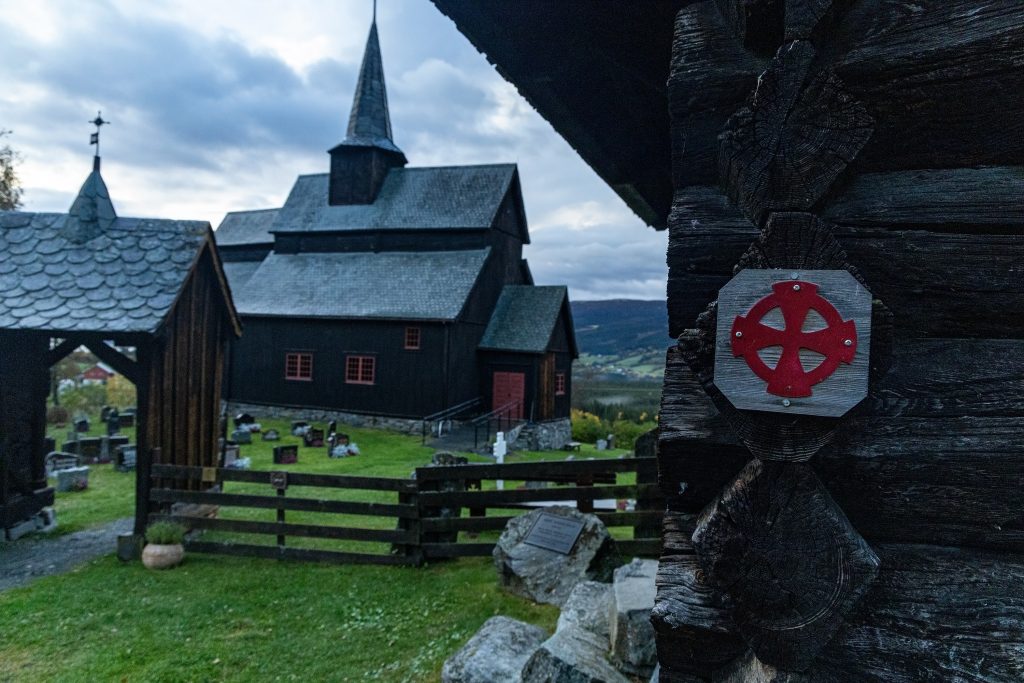

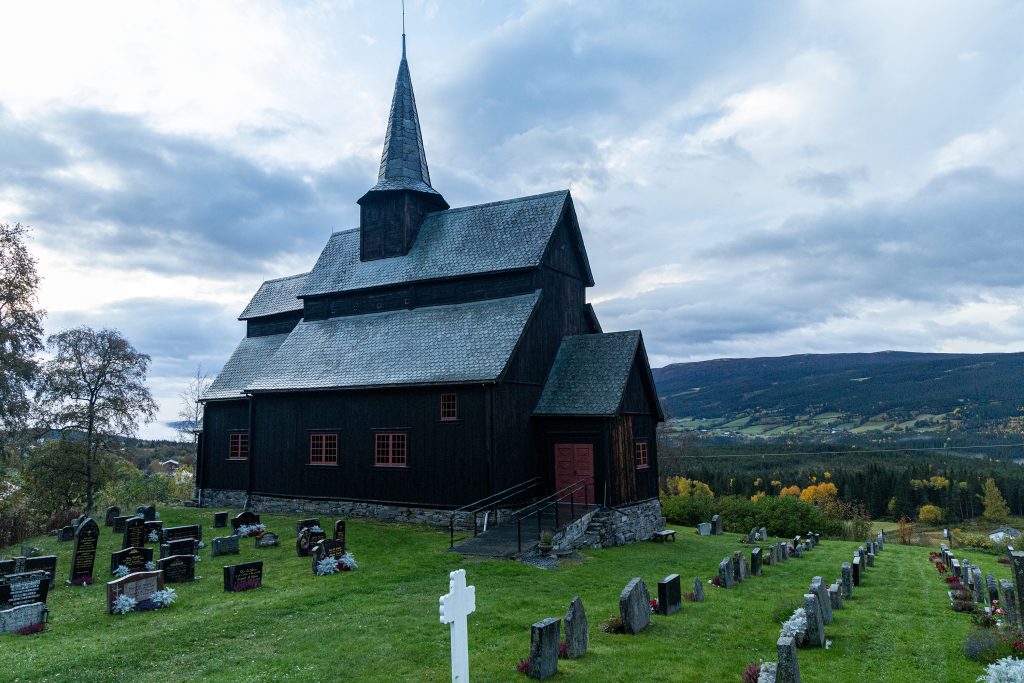
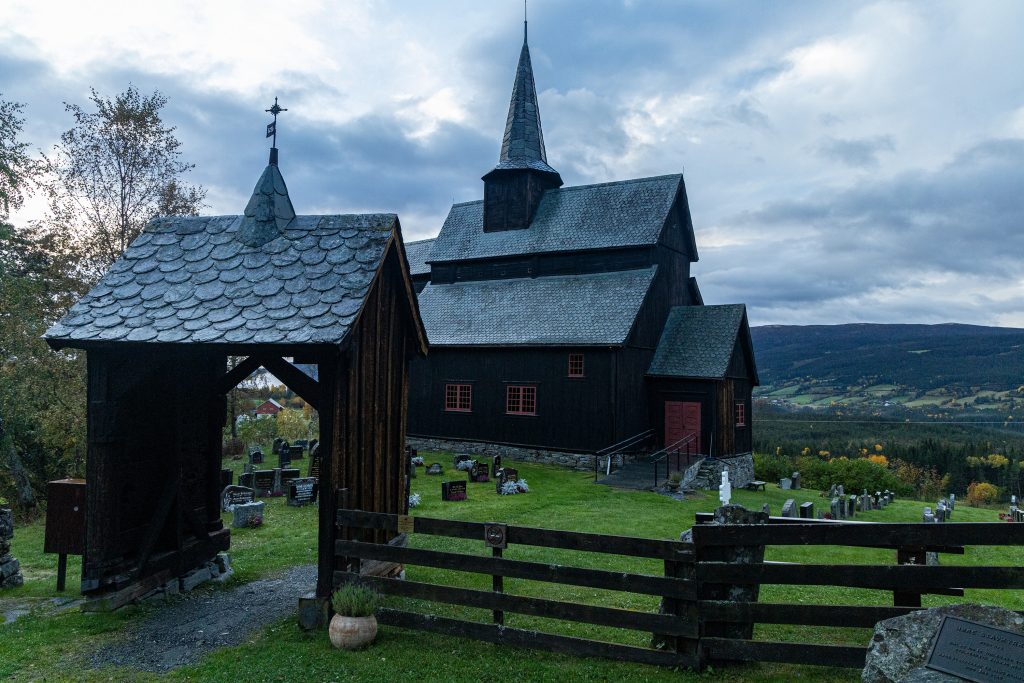
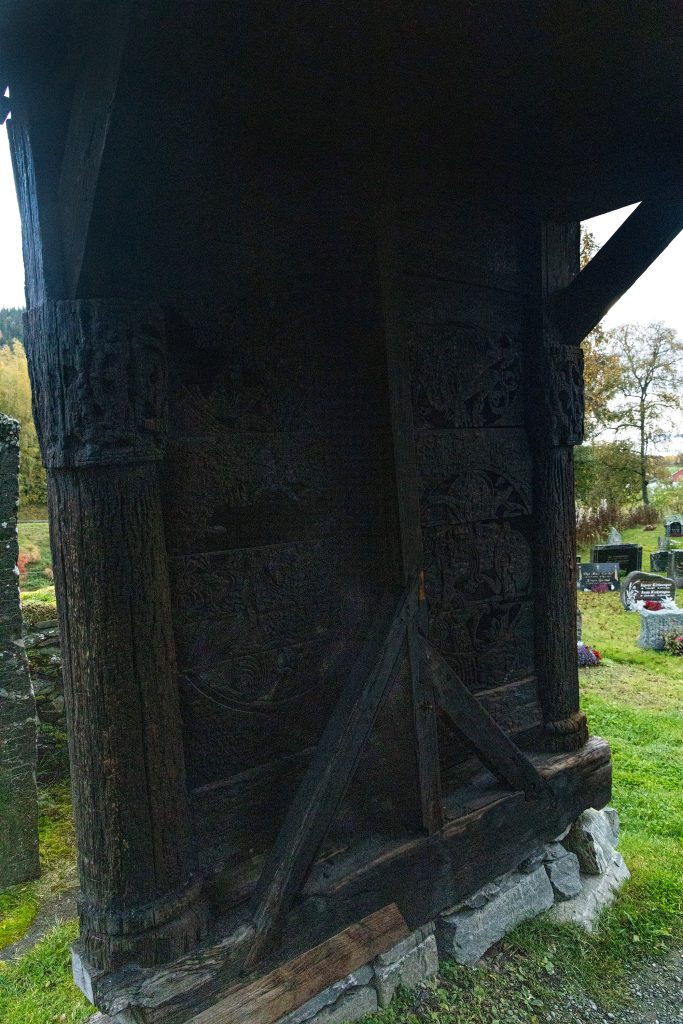
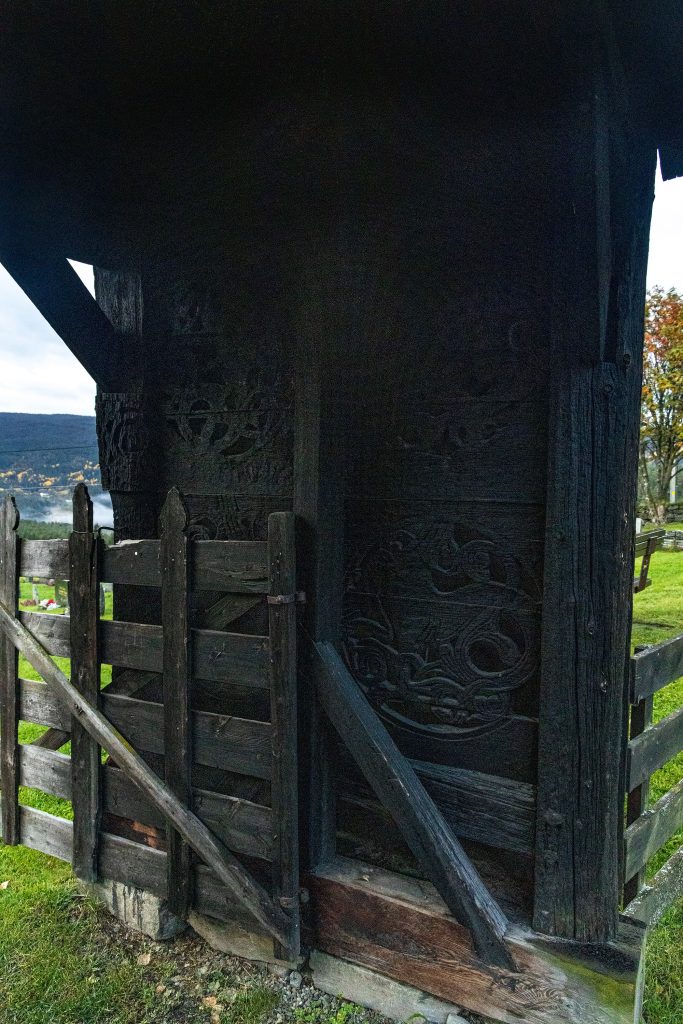
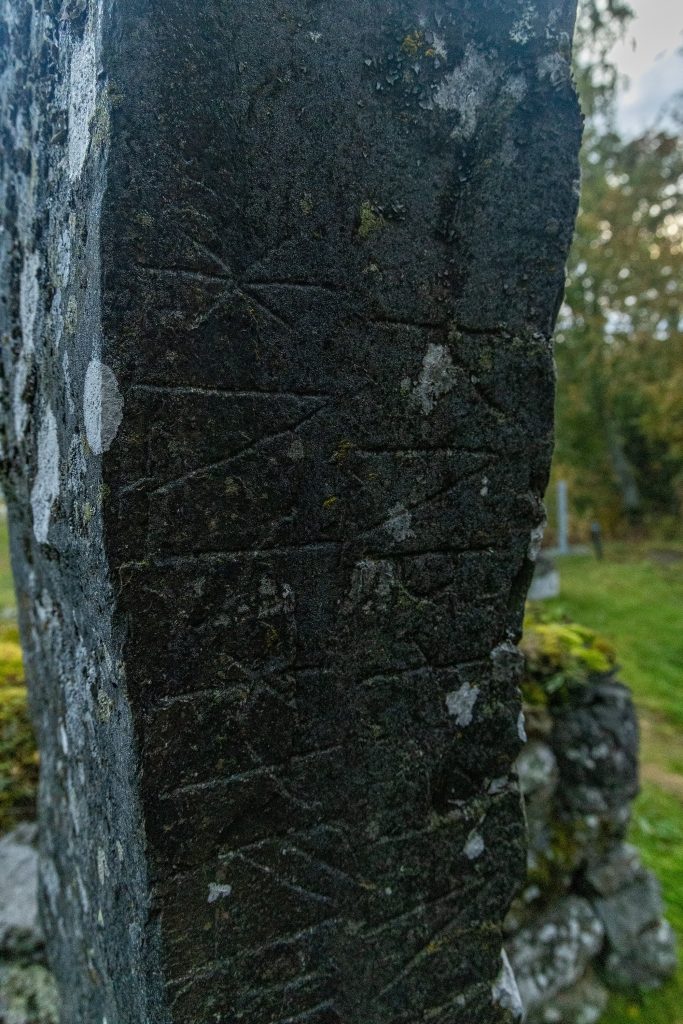
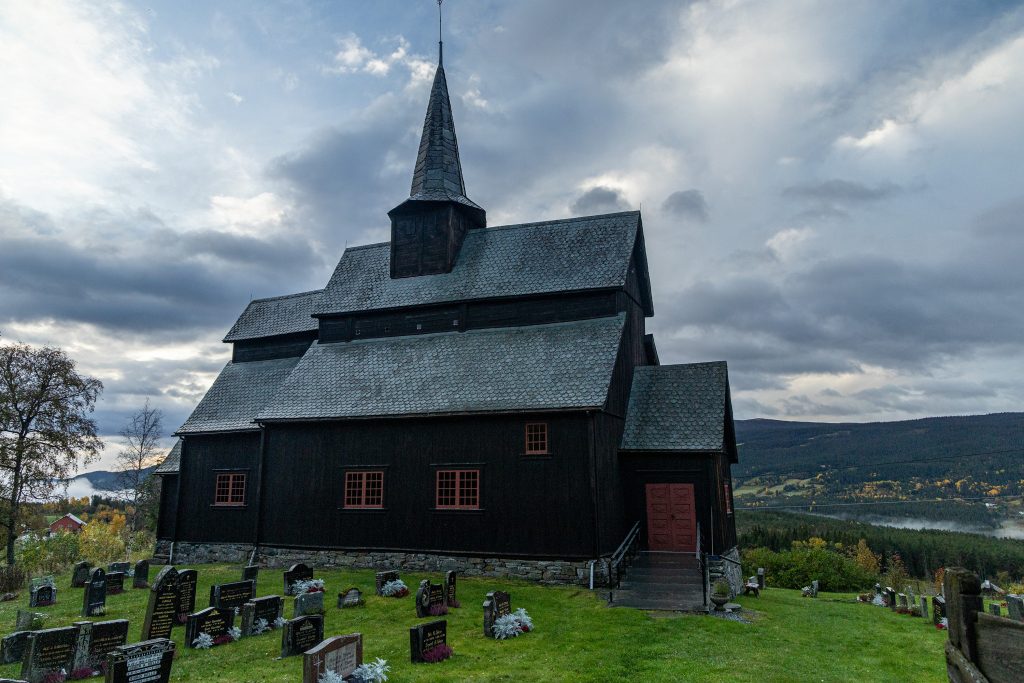
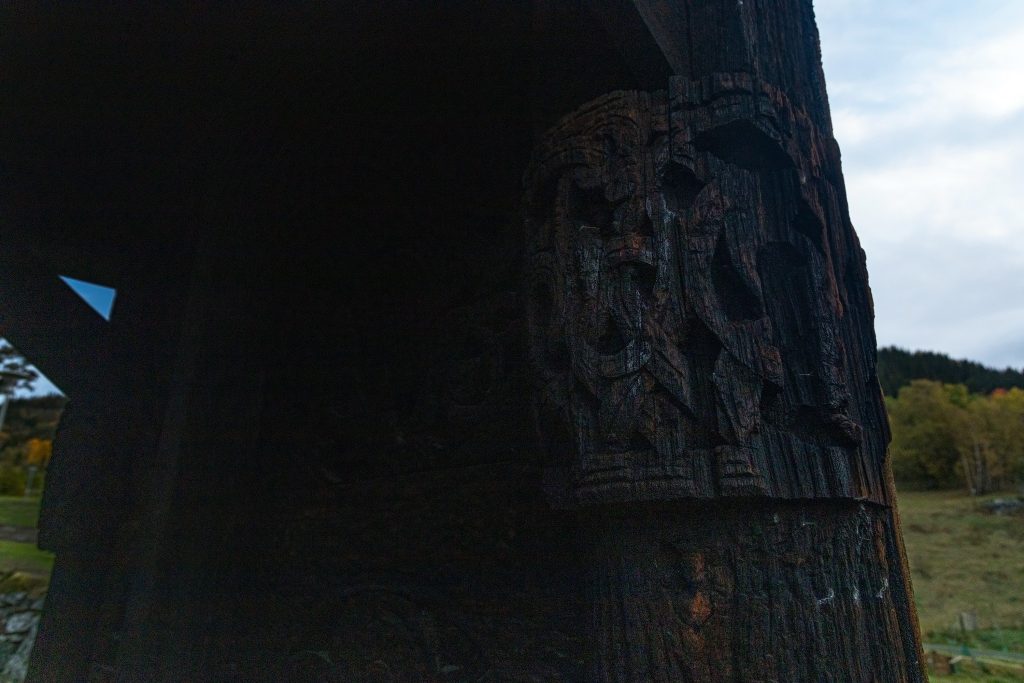
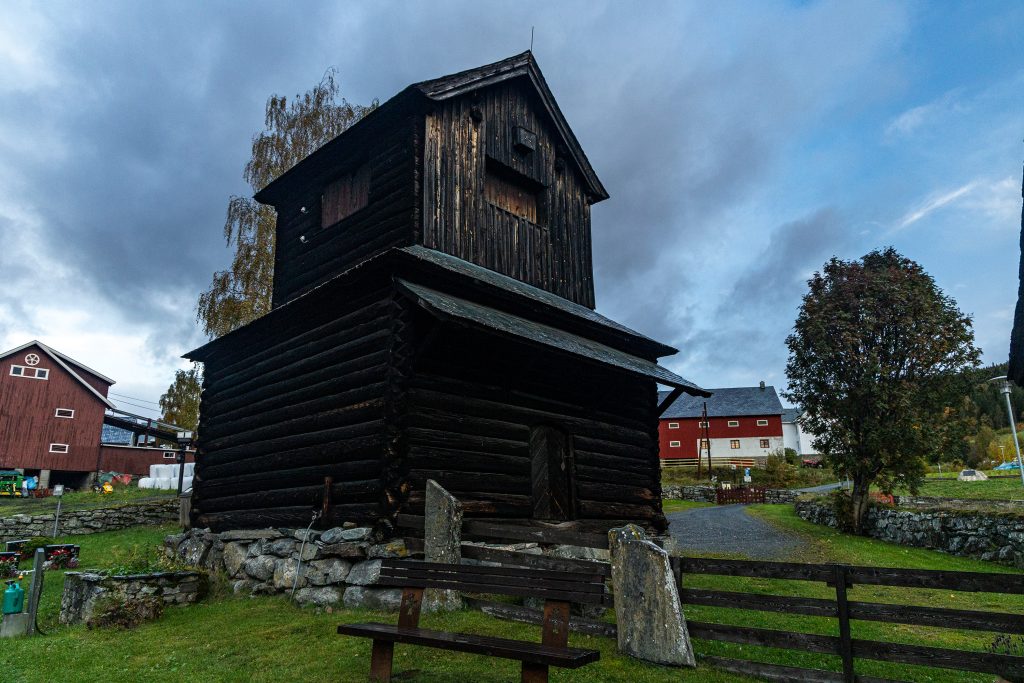
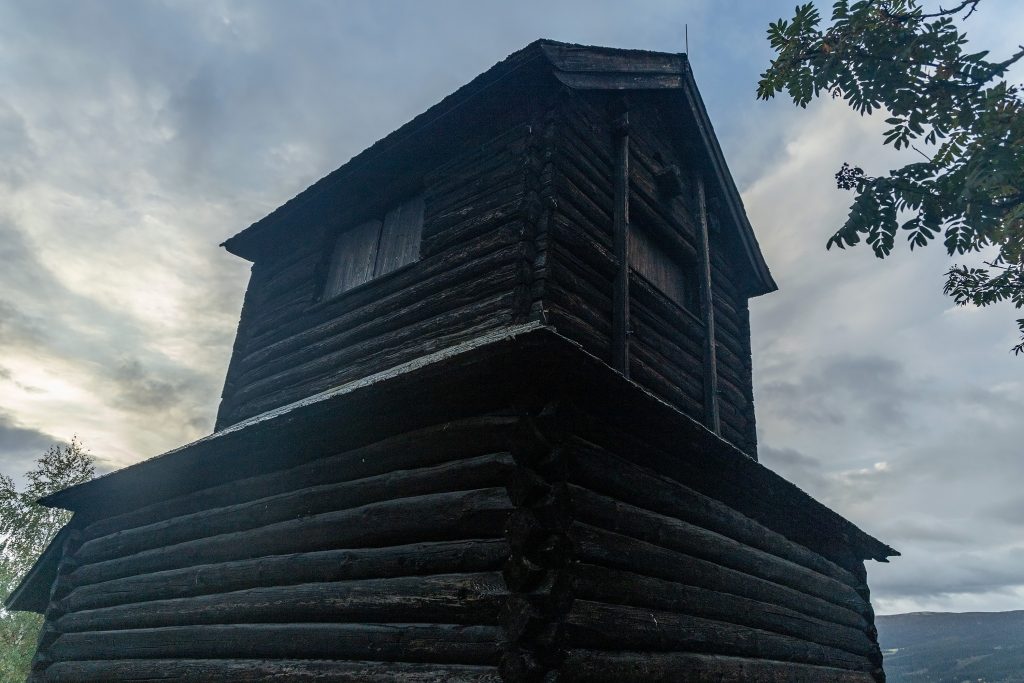
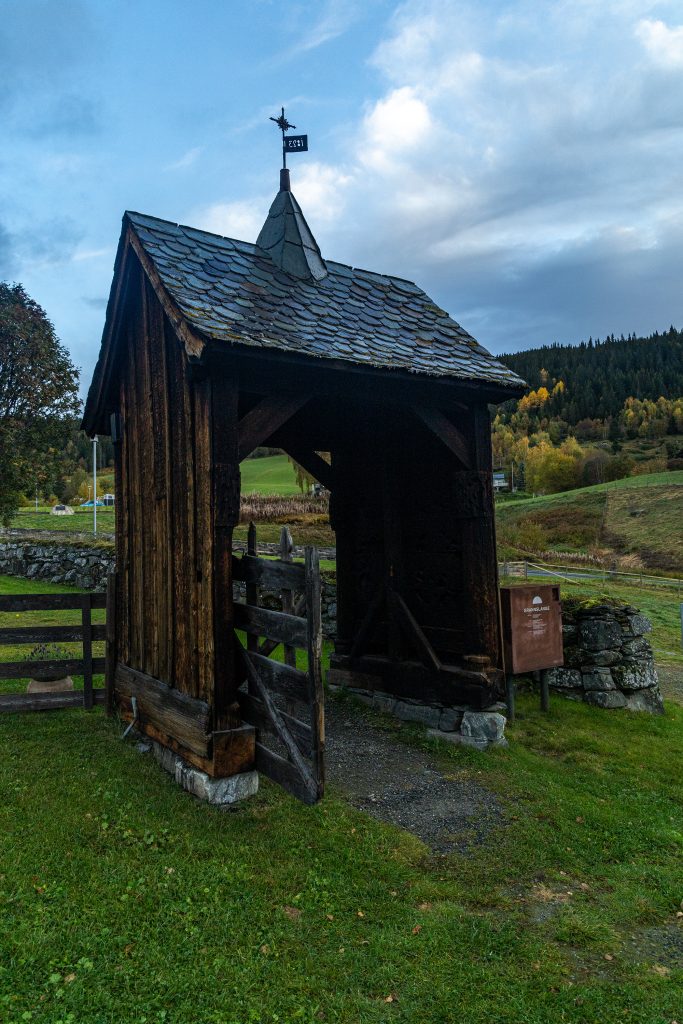
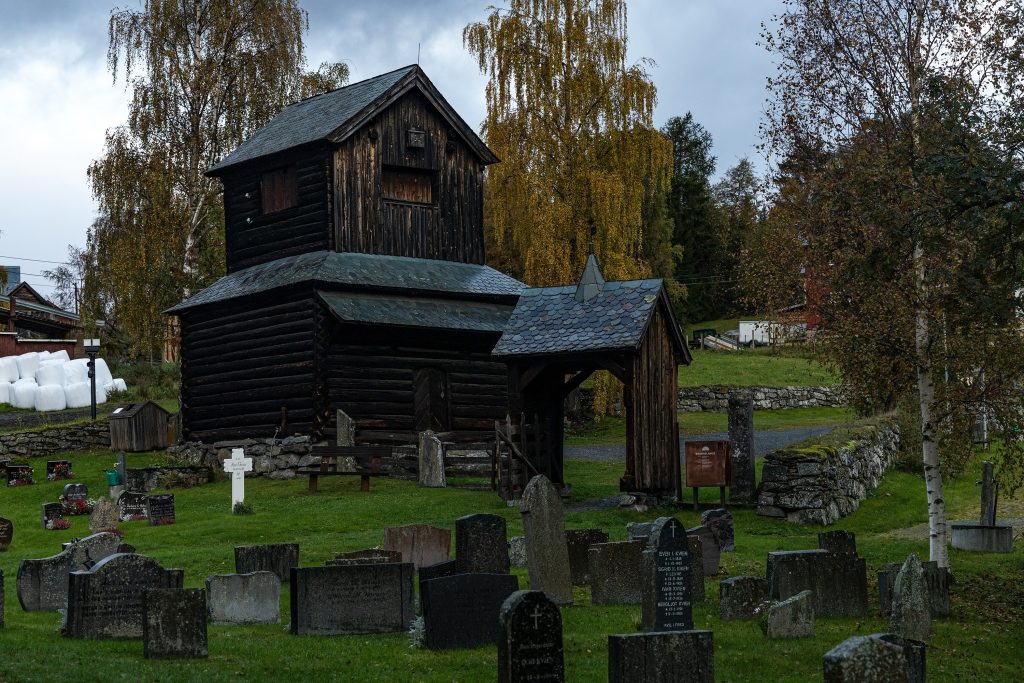
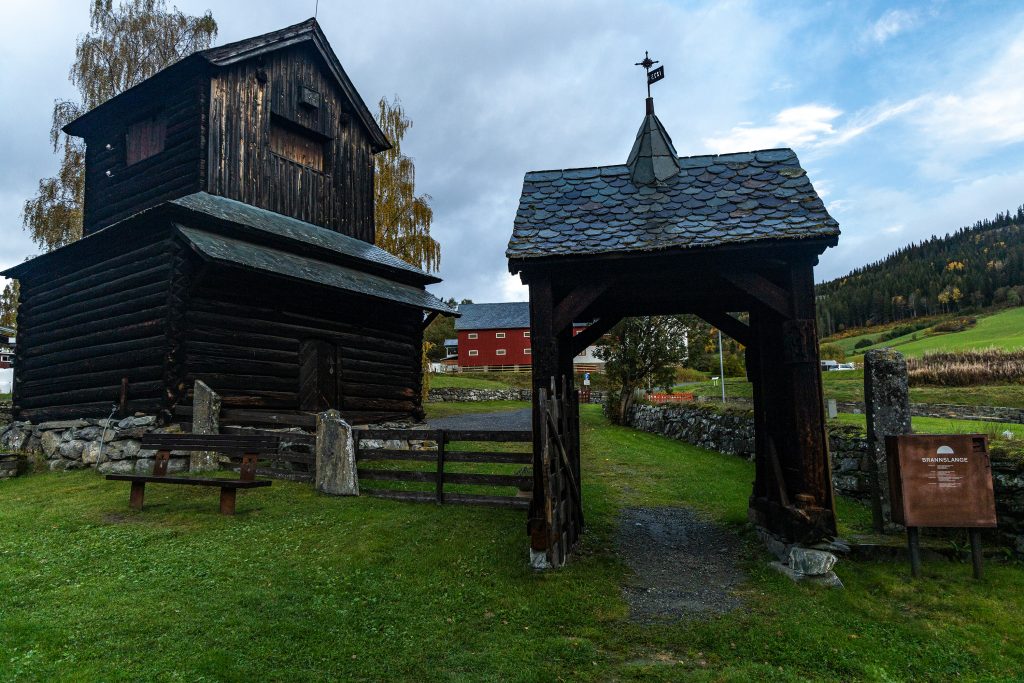
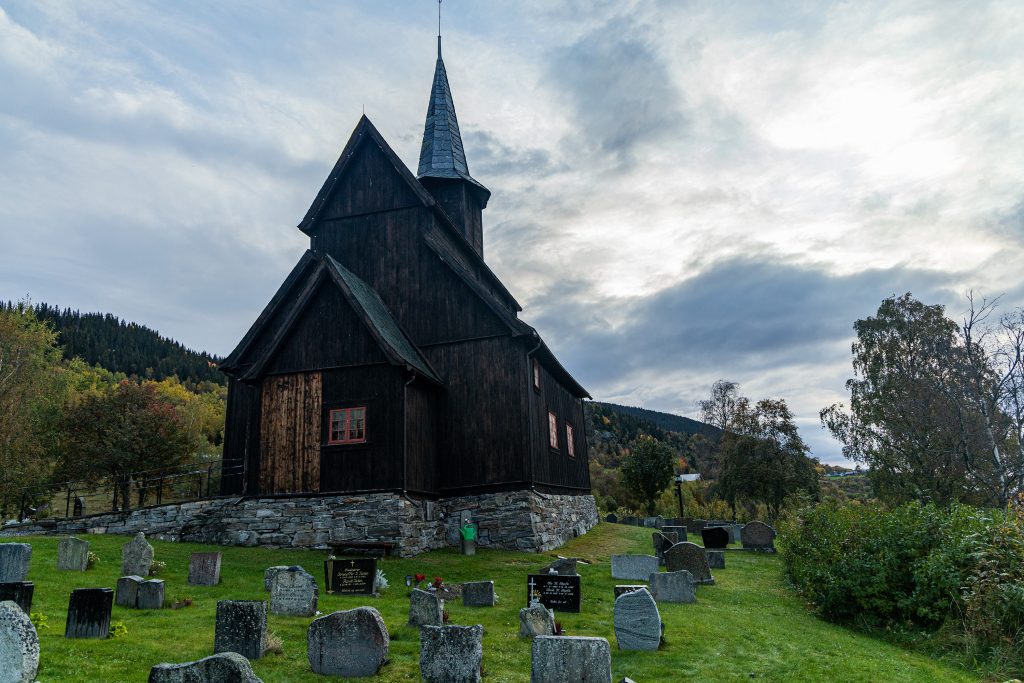
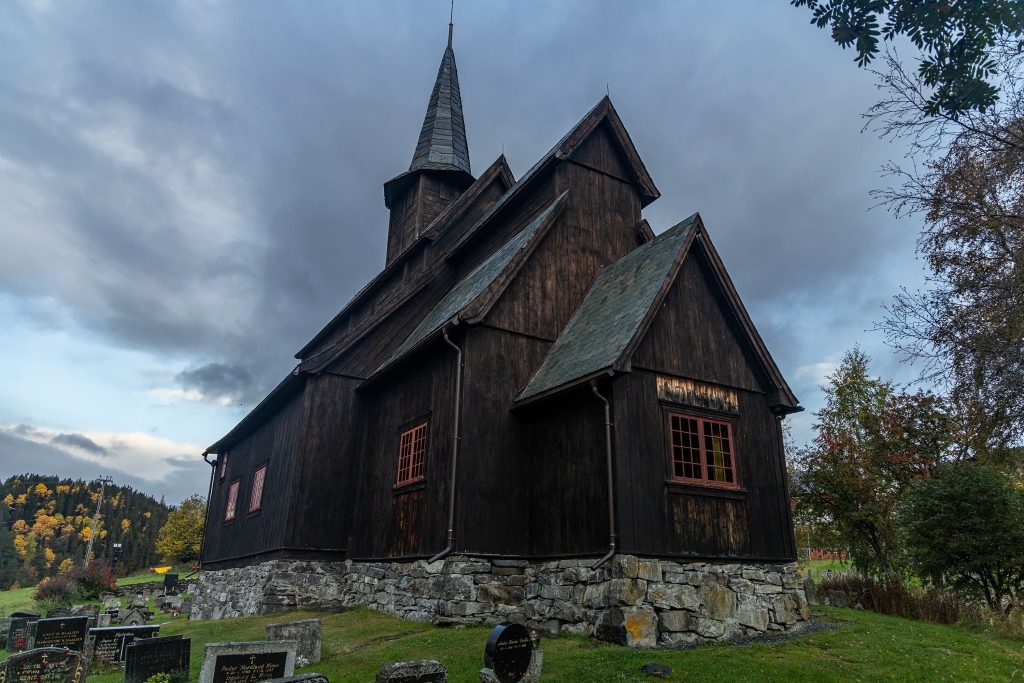
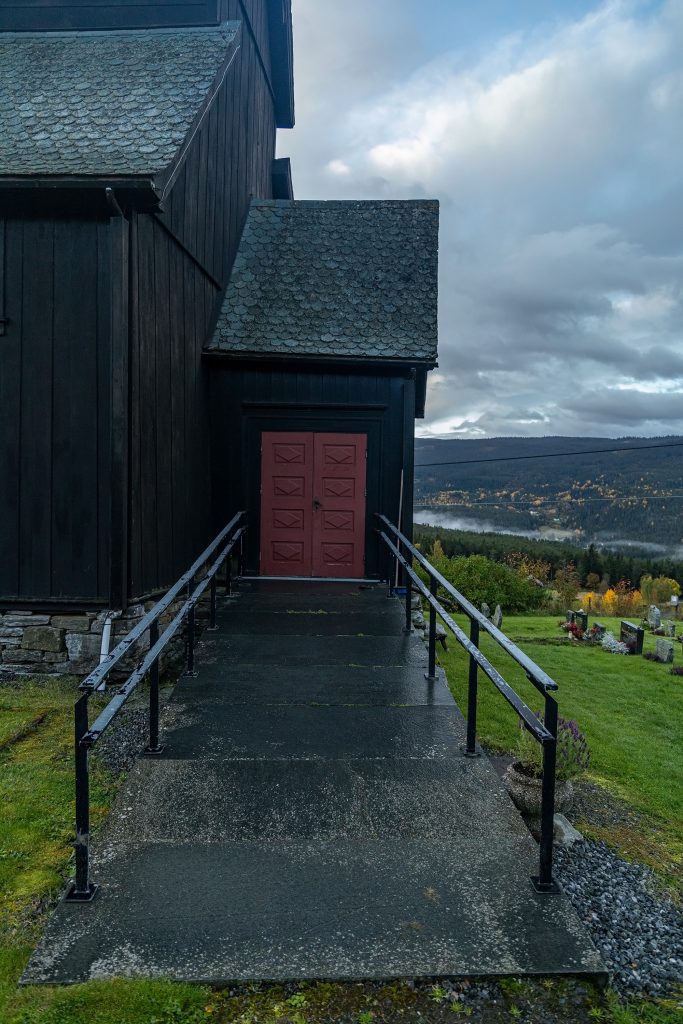
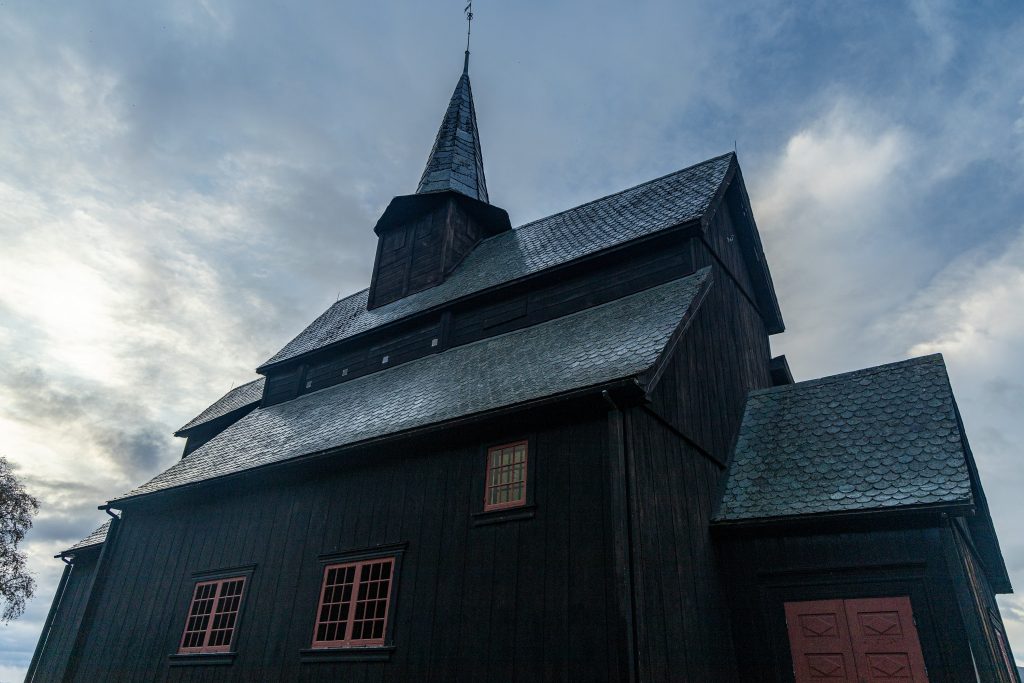
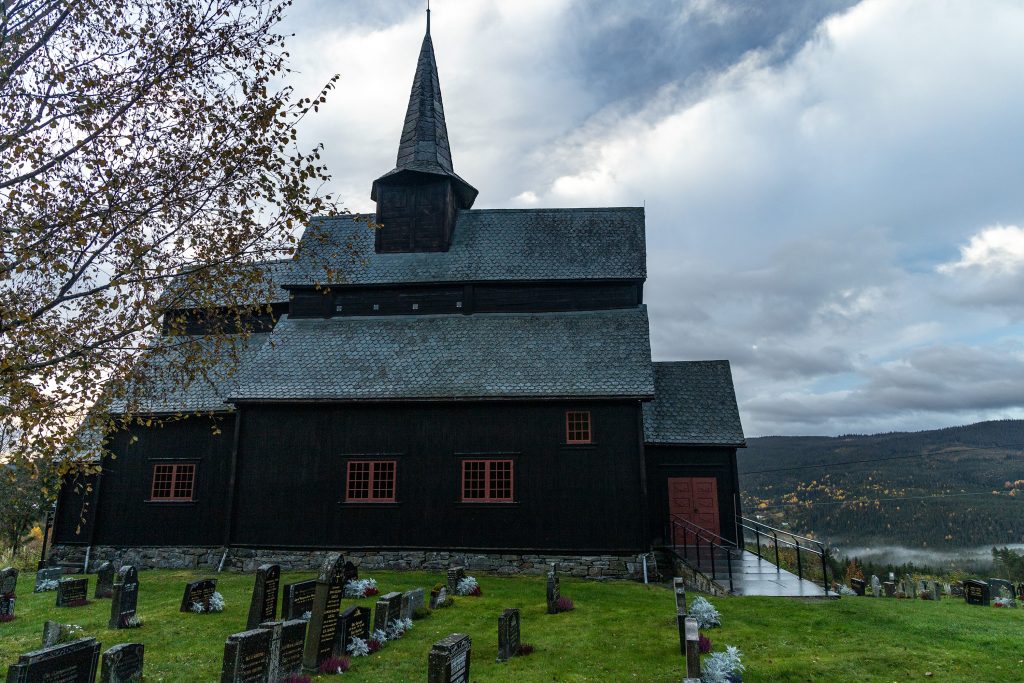
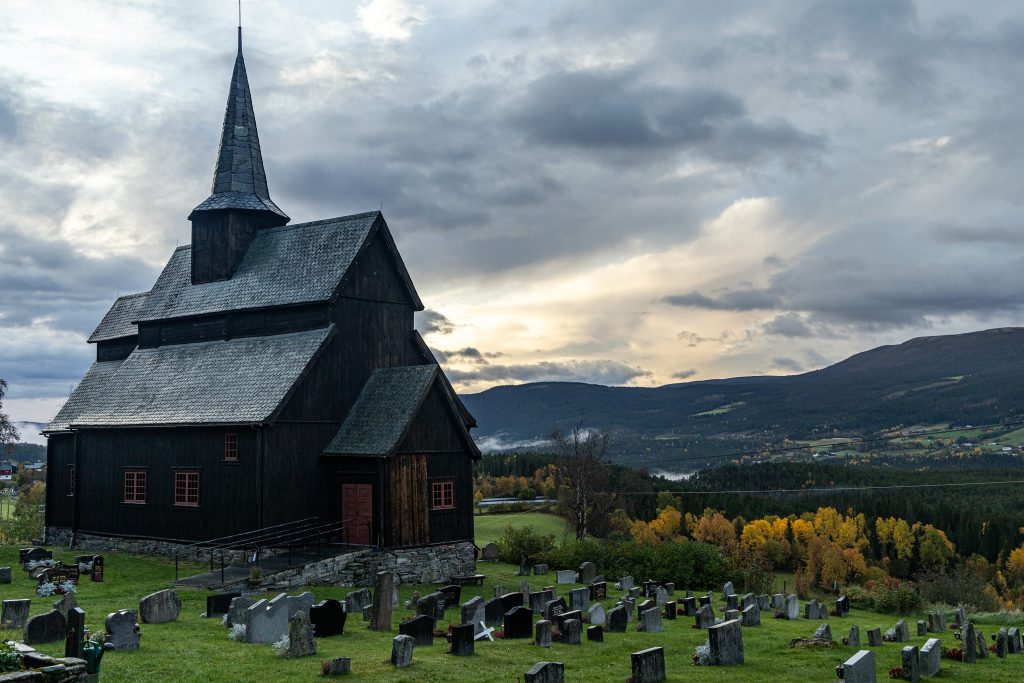


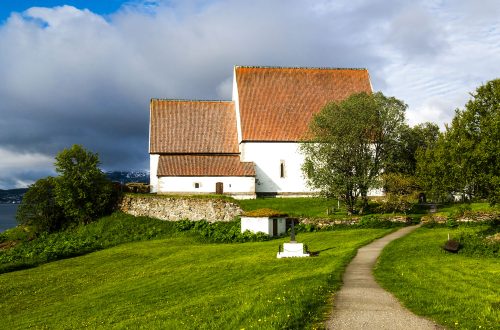
2 komentarze
Lidia Ogrodowczyk
Bardzo interesujące.
Eugeniusz
Bardzo ciekawe..